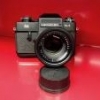Ilford Delta 3200
-
Recently Browsing 0 members
- No registered users viewing this page.
-
Similar Content
-
- 8 replies
- 442 views
-
- 2 replies
- 446 views
-
- 1 reply
- 469 views
-
- 9 replies
- 3,218 views
-
- 37 replies
- 20,985 views
-




Recommended Posts
Join the conversation
You can post now and register later. If you have an account, sign in now to post with your account.
Note: Your post will require moderator approval before it will be visible.